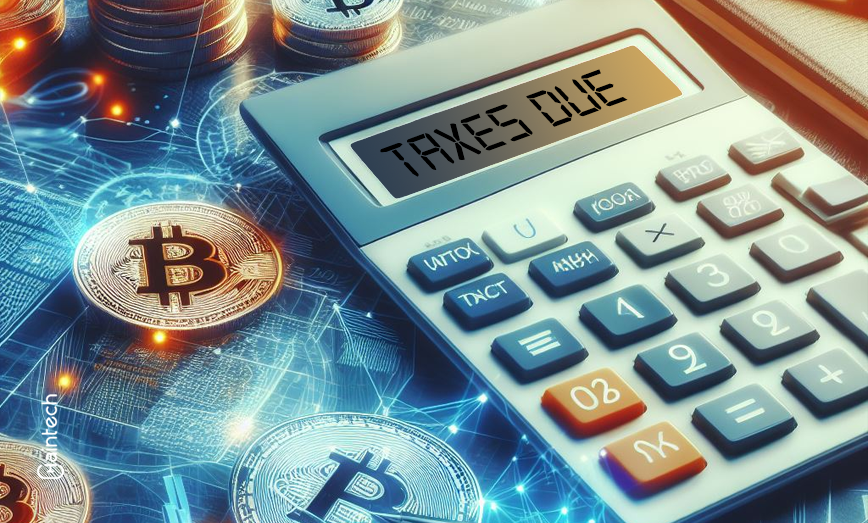Guide to Crypto Tax in India

Taxation is often likened to death – an unavoidable aspect of life. Governments adapt to new developments, ensuring they are included in the tax net. Cryptocurrencies are no exception. In recent years, digital currencies like Bitcoin and assets like NFTs have gained global popularity, with cryptocurrency exchanges facilitating extensive trading.
Cryptocurrencies have reshaped investment landscapes worldwide, starting with Bitcoin’s emergence after the 2008 financial crisis. Since then, numerous cryptocurrencies have emerged, with India’s market witnessing rapid growth.
Cryptocurrencies and NFTs are currently in a regulatory gray area in India. Although the Reserve Bank of India (RBI) attempted to ban cryptocurrencies in 2018, the Supreme Court overturned this decision, leaving cryptocurrencies neither legal nor illegal. Similarly, NFTs lack clear regulatory guidelines.
Despite unclear legislation, the Indian government has adopted a new tax regime on virtual digital asset profits on April 1, 2022. VDA transfers are now taxed 30% under the Income Tax Act.
In this blog, we’ll understand the crypto tax in India.
How is cryptocurrency taxed in India?
Navigating the taxation of cryptocurrencies in India requires an understanding several key points.
- First, digital assets like cryptocurrencies are called “Virtual Digital Assets,” and when you sell them, you pay a flat 30% tax. You can’t deduct much except for what you originally paid for them. If you lose money on one digital asset, you can’t use that loss to lower taxes on other profits that you earn.
- Gifted digital assets must be taxed. Losses on one type of digital currency cannot be used to minimise taxes on other assets.
- Starting from July 1, 2022, there’s a 1% Tax Deducted at Source (TDS) on all sell transactions of Virtual Digital Assets (VDAs). When you report your crypto income, whether it’s from investments or business, you have to use the right Income Tax Return form.
- The part of the tax return where you report your gains from crypto and other digital assets is called Schedule Virtual Digital Assets. There are penalties if you don’t follow the rules about TDS.
- Lastly, you have to file your Income Tax Return for the year by July 31st, 2024. If you miss that deadline, you can still file until December 31st, 2024, but it’s important to understand these rules to make sure you’re following the law when dealing with cryptocurrency taxes in India.
Understanding TDS on Crypto Transactions
Understanding TDS is important for anyone dealing with cryptocurrencies to make sure they’re following the tax rules correctly. Tax Deducted at Source (TDS) is like a way for the government to collect taxes directly from certain transactions.
Here’s how it works: When you sell cryptocurrencies, like Bitcoin, on platforms such as CoinDCX or Binance, a small part of the money you make gets deducted as tax, and this amount is sent to the government.
For example, let’s say you sell Bitcoin for ₹1000. From that amount, around ₹10 will be taken as TDS and sent to the government. Whether you make a profit or a loss, this TDS is always deducted.
However, there’s a rule that if all your crypto transactions, both buying and selling, are below ₹10,000, you might not have to pay TDS. But remember, this rule applies to all the transactions you do across different platforms.
If your total transactions go over ₹10,000, then TDS will be taken from the first applicable transaction starting from July 1, 2022.
Which Crypto Transactions are liable to tax in India?
Understanding the tax implications of these crypto transactions is essential for complying with Indian tax laws and avoiding any potential penalties or fines.
In India, several crypto transactions are subject to taxation. Let’s break them down:
Tax on Airdrops:
If you receive free tokens or coins through airdrops, they are considered taxable income and should be declared accordingly.
Tax on Mining Cryptocurrency:
Any income earned from mining cryptocurrencies is taxable and should be reported as part of your total income.
Tax on Crypto Gifts:
If you receive cryptocurrencies as gifts, they are subject to taxation based on their market value at the time of receipt.
Drawing a Salary in Crypto:
If you receive your salary in the form of cryptocurrency, it will be taxed just like regular income based on your income tax slab. Additionally, when you sell the received crypto, it will be taxed at a flat rate of 30%.
Staking Crypto:
Earnings from staking cryptocurrencies are also taxable. When you earn rewards or benefits from staking, they should be included in your taxable income.
Key Strategies of Crypto Tax Planning in India
1. Hold on to Your Investments:
Keep your crypto investments for over a year to save on taxes. This helps you benefit from value growth over time and reduces the impact of sudden market changes. Plus, if you don’t sell your investments, you won’t have to pay much tax.
2. Use Crypto Tax Software and Get Professional Help:
Calculating taxes on your crypto earnings can be complicated. But using tax software, created by financial experts, can make it easier. It automates the math for you, saving time and possibly lowering costs. These programs can also help you find other ways to save on taxes.
3. Give Crypto as a gift:
Reduce your tax bill by giving crypto to your family. In India, VDA gifts up to ₹50,000 are not taxable. But it’s important to talk to a CA to make sure you’re following the rules correctly.
4. Treat Mining as a Business:
If you mine crypto full-time, consider setting up a legal business entity like a Private Limited company. This allows you to categorise your mining income as business earnings. You can also deduct expenses related to running your mining operation, which can lower your taxable income.
How to calculate tax on crypto
Calculating taxes on your crypto earnings might sound daunting, but it’s not as complicated as it seems. To start, you’ll need to determine your cost basis, which is essentially how much you paid for your crypto or its value in INR when you received it.
Unlike some other tax systems, the Indian Income Tax Department doesn’t let you factor in fees like buying or selling costs when calculating your cost basis. Once you’ve figured out your cost basis, you subtract it from your sale price to find your gains.
If you didn’t sell your crypto but instead traded it or spent it, you’d subtract your cost basis from the fair market value in INR on the day you got rid of it. This calculation gives you your value gain.
So, to recap, your gains are simply your sale price minus your cost price. With this information, you’ll be well-equipped to calculate your profits from crypto and determine the tax you owe.
Value gain = Sale Price – Cost basis
See how much tax you are liable to pay on crypto gains.
Conclusion
Navigating Crypto Tax in India can seem complex, but there are some scenarios where you won’t have to pay any tax at all. If you’re holding onto your crypto for the long term (also known as HODLING), transferring it between your own wallets, or receiving it as a gift from friends or relatives, you won’t be subject to taxation for amounts up to RS 50,000.
This means you can enjoy the benefits of crypto without worrying about tax implications in these situations. However, it’s essential to stay informed about any updates or changes to taxation laws to ensure compliance with Indian tax regulations.









